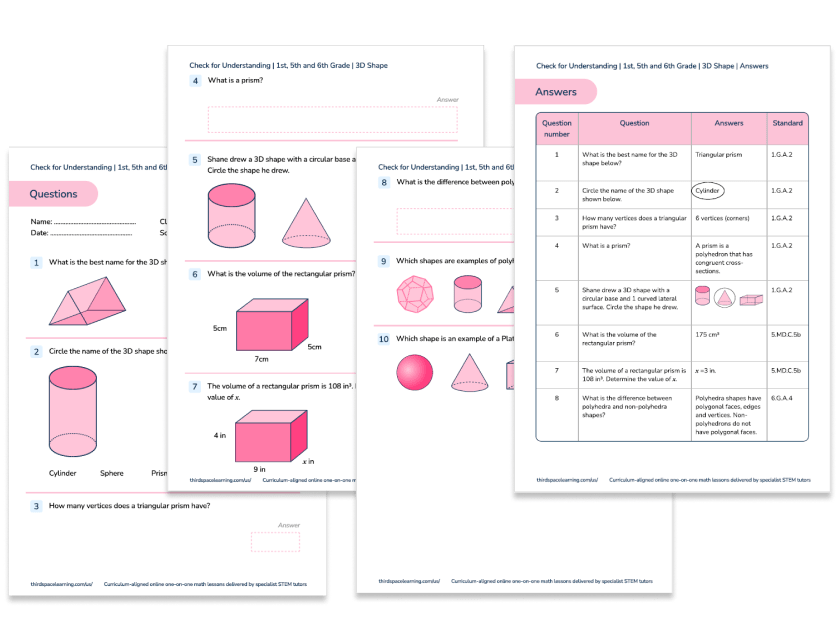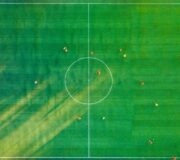What Are Types of Triangles? Isosceles, Scalene, Equilateral And Right Triangles: Explained For Teachers, Parents and Kids
Here you can find out about the different types of triangles, their properties, and how you can help children to understand triangles.
Students encounter different triangles as early as kindergarten but as they progress through school, the amount of knowledge that they need to know about different triangle types increases.
They will need to know the names of these different types of triangles and their properties. They will also need to know how to use these properties when classifying triangles and solving problems, such as missing angles, by using and applying their understanding.
Triangles Check for Understanding Quiz
Use this quiz to check Grade 4-5 students’ understanding of triangles.
Download Free Now!What is a triangle?
As the name suggests, a triangle is a math shape that contains three angles and three sides. It also contains three vertices. The angle measures, when added together, will result in a total of 180 degrees.
Starting in Kindergarten, students will just need to know that any triangle shapes will have three sides and have three corners (vertices).
Types of triangles
What is an equilateral triangle?
There is a hint within the name as to the properties of this triangle. An equilateral triangle is where the lengths of the sides of a triangle and all its interior angles are equal.
As 180 degrees divided by 3 is 60, each angle will always be an acute angle of 60 degrees. Therefore, an equilateral triangle is also an acute triangle and an equiangular triangle
Note that an obtuse triangle is a triangle with one obtuse angle – a triangle can only have a maximum of one obtuse angle, otherwise, it would take on a different shape and the angles would not add up to 180.
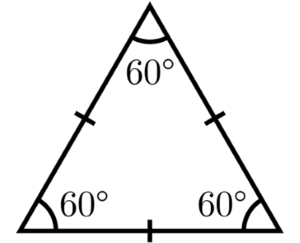
What is an isosceles triangle?
An isosceles triangle has two sides of equal length and two equal angles. Isosceles comes from the Latin meaning ‘equal legs’ and this can be an engaging way to get students to remember what an isosceles triangle is.
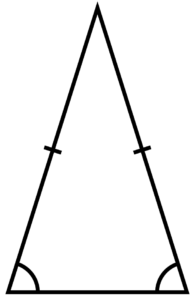
What is a scalene triangle?
When none of the sides or angles are equal it is called a scalene triangle. All sides of the triangle are different lengths and all angles have different measures. However, the internal angles of the triangle will continue to add up to 180 degrees.
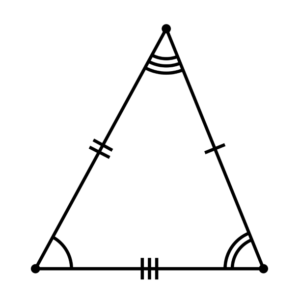
What is a right triangle?
A right triangle is, as the name implies, a triangle that has one angle of exactly 90 degrees opposite its longest side, or its ‘hypotenuse’. It may be useful to introduce this term at this stage so that students are familiar with it when they come to studying the Pythagorean Theorem in later years.
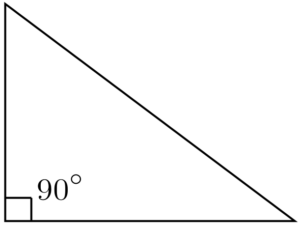
When will my child learn about triangles in elementary school?
Students’ first introduction to triangles comes in kindergarten. According to the Common Core math standards, students should be taught to:
- Recognize and name common 2D and 3D shapes, including:
- 2D shapes [for example, rectangles (including squares), circles and triangles]
- Students will also begin comparing 2D and 3D shapes using informal language.
- Students handle common 2D and 3D shapes, naming these and related everyday objects fluently. They recognize these shapes in different orientations and sizes and know that rectangles, triangles, cuboids and pyramids are not always similar to each other.
This progresses in 4th grade where students must learn the following:
- Compare and classify geometric shapes, including quadrilaterals and triangles, based on their properties and sizes.
- Students continue to classify shapes using geometrical properties, extending to classifying different triangles (for example, isosceles, equilateral, scalene) and quadrilaterals (for example, parallelogram, rhombus, trapezium).
This progresses in Year 6 where students must learn the following:
- compare and classify geometric shapes based on their properties and sizes and find unknown angles in any triangles, quadrilaterals, and regular polygons.
Other schools:
Based on your child’s state and school curriculum, they may be introduced to topics in a different order or in different grade levels.

Meet Skye, the voice-based AI tutor making math success possible for every student.
Built by teachers and math experts, Skye uses the same pedagogy, curriculum and lesson structure as our traditional tutoring.
But, with more flexibility and a low cost, schools can scale online math tutoring to support every student who needs it.
Find out more
How does this relate to other areas of mathematics?
Students will also be asked to calculate the area and perimeter of a triangle when they reach 6th grade and they may use some facts about triangles to assist them in this endeavor.
Links may be made between the angles of a triangle and angles in a straight line being the equivalent to a half turn (180 degrees) and students may investigate why angles in a triangle are equal to the angles on a straight line.
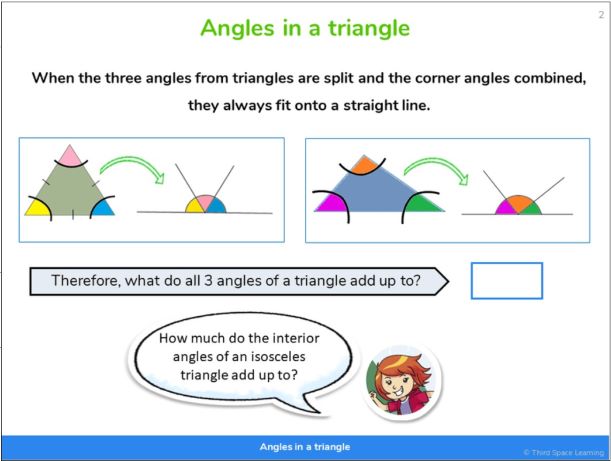
How does this relate to real life?
Triangles are structurally the most stable geometric shape and are used throughout the construction industry, even though you cannot see them on modern buildings.
You may see some if you go across long bridges. Next time you are challenged to make a bridge out of spaghetti, try to incorporate triangles and you will be surprised how well it can hold up!
Triangles worked examples
1. Circle the isosceles triangle.
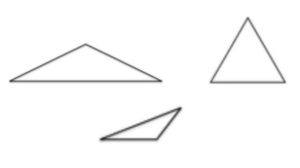
To answer this question, I need to know the different types of triangles as well as be fluent in my understanding of the properties of triangles. I need to know that an isosceles triangle has two lengths of their sides that are identical, and look at the triangles to see if this is the case. From this, I can deduce that the top left triangle is the isosceles triangle
2. Find the missing angle.
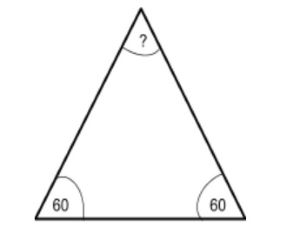
For this question, I would have to know that the internal angles in a triangle all add up to 180 degrees and that this is an equilateral triangle as it has equal sides, so all angles must be equal. I can therefore deduce that the missing angle is 60 degrees.
3. Draw an isosceles triangle with two 80-degree angles.
To be successful here, I would need to know how to use a protractor accurately. With this knowledge, I would then be able to draw a triangle where 2 angles are 80 degrees. This would look like the following:
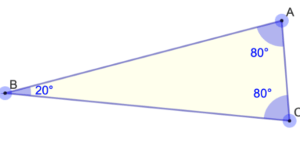
4. Find the missing angles.
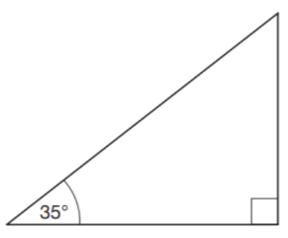
To find the missing angle, I need to know that there are 180 degrees in a triangle and that the square in the bottom right represents an angle of 90 degrees. From here, I can perform some calculations to find the missing angle. I will first subtract 90 from 180.
180 – 90 = 90
As I know the other angle is 35 degrees, I can subtract that from the 90.
90 – 35 = 55
The missing angle is 55 degrees.
Triangles example questions
1. What is a scalene triangle?
Answer: a scalene triangle has 3 unequal sides and no angles are the same
2. Draw an equilateral triangle
Answer:
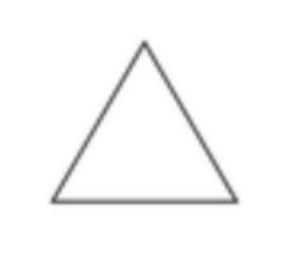
3. Find the value of Y in the triangle
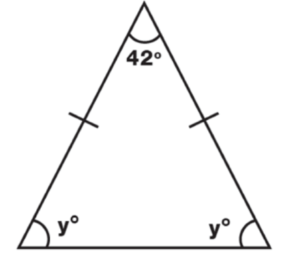
Answer: Y = 69 degrees
4. Circle the scalene triangle
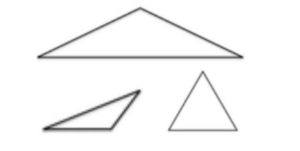
Answer: bottom left is the scalene
Wondering about how to explain other key math vocabulary to children? Check out our Math Dictionary For Kids and Parents, or try these other blogs:
- Shape Definition
- What is Math Mastery?
- What are 2d shapes? (Shape properties)
- What Are Angles? (acute, reflex, obtuse angles and more)
Do you have students who need extra support in math?
Skye—our AI math tutor built by experienced teachers—provides students with personalized one-on-one, spoken instruction that helps them master concepts, close skill gaps, and gain confidence.
Since 2013, we’ve delivered over 2 million hours of math lessons to more than 170,000 students, guiding them toward higher math achievement.
Discover how our AI math tutoring can boost student success, or see how our math programs can support your school’s goals:
– 3rd grade tutoring
– 4th grade tutoring
– 5th grade tutoring
– 6th grade tutoring
– 7th grade tutoring
– 8th grade tutoring
The content in this article was originally written by primary school lead teacher Neil Almond and has since been revised and adapted for US schools by elementary math teacher Christi Kulesza
